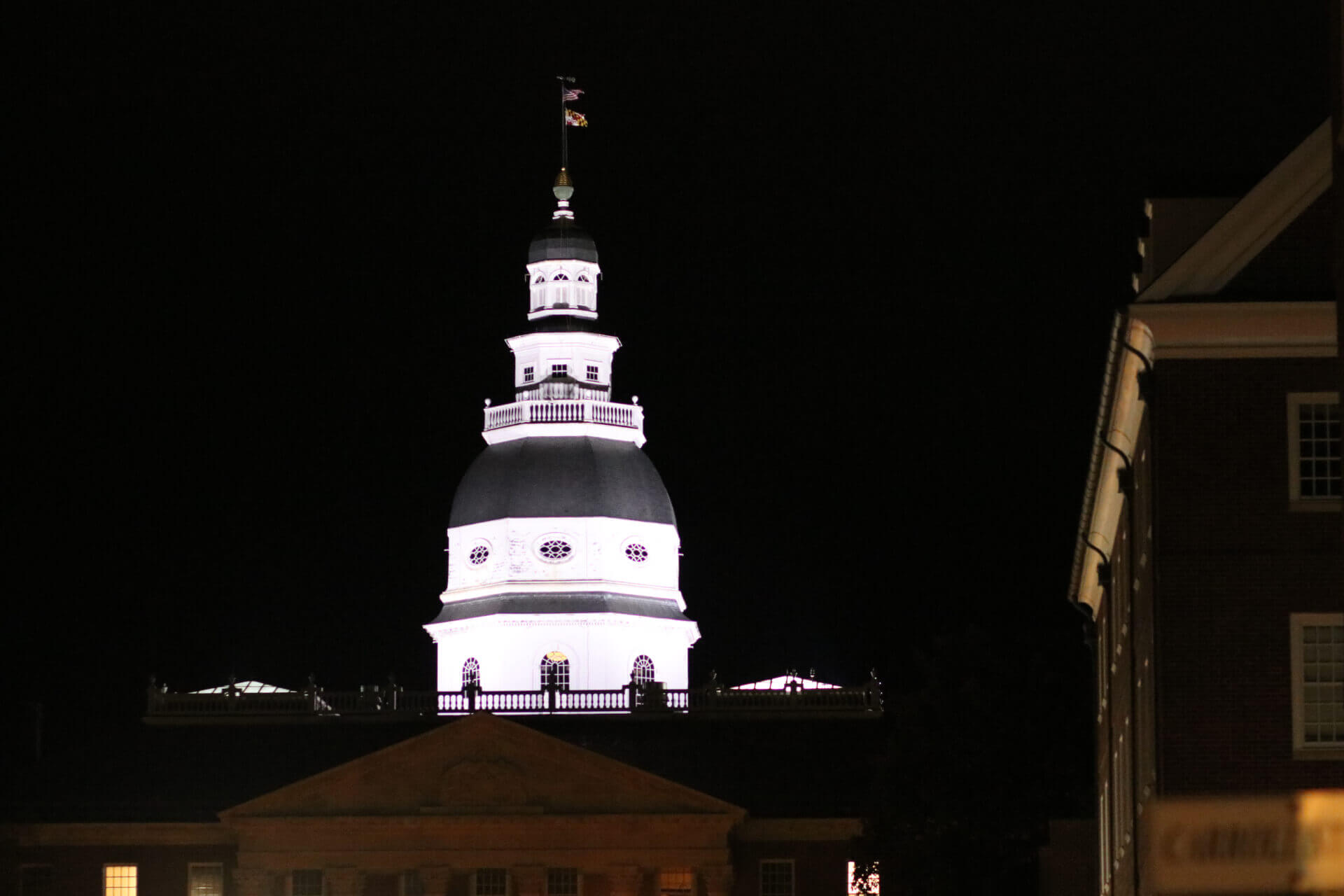Analysis: The Goldberg Goldman Fallout and the Rocky Shoals of Race for Md. Democrats

The leak of an email from a high-ranking state Democratic official and political donor led to her resignation Monday. It also spawned a deep and searing conversation about the Democratic Party’s relationship with Black candidates and Black voters.
Barbara Goldberg Goldman, a vocal supporter of former U.S. Labor Secretary Tom Perez for governor, resigned Monday as deputy treasurer of the Maryland Democratic Party. In the leaked email, written in December, she expressed doubts that a Black Democrat could be elected governor, noting that three Black men had unsuccessfully run for governor and arguing that Maryland has increasingly become a purple state in gubernatorial elections.
In all probability, the email, which had been circulating in political and media circles for the past several days, was leaked to embarrass Perez and raise uncomfortable questions about whether his campaign was benefiting from the sentiment Goldberg Goldman expressed that a Black gubernatorial nominee could not win in November.
But then the email from Goldberg Goldman, who is well known to several hundred Democratic activists in Maryland at most, became the centerpiece of an article in Axios on Sunday evening about the fortunes of Black candidates across the country and whether they are getting adequate support from Democratic leaders.
The article sparked a social media firestorm among certain Maryland Democrats. Some posts predictably focused on Goldberg Goldman’s language and the Perez campaign’s possible culpability.
But the article, which featured remarks from the three Black Democratic candidates for governor, from the Perez campaign, and from other Black statewide candidates across the country, also sparked the beginnings of a necessary conversation in Maryland about Black candidates and their relationship with party leaders, at a time when Democrats are wholly dependent on Black voters for their electoral successes.
Because much of the conversation took place on social media initially, it wasn’t very pretty, and it reinforced the notion that Democrats are happiest when they are attacking each other. But the discourse got deeper as the hours went by.
“We do not condone or support the comments in her email. They do not represent the values of the Maryland Democratic Party,” party Chair Yvette Lewis said in a statement immediately after Goldberg Goldman resigned as deputy treasurer. “Maryland is the most diverse state on the east coast. I am excited that our Gubernatorial candidates reflect this diversity. I also know that whoever emerges as our nominee will be a superb candidate and an outstanding Governor.”
The campaigns of the three Black candidates — former Prince George’s County Executive Rushern L. Baker III, former U.S. Education Secretary John B. King Jr., and author and former nonprofit executive Wes Moore — have all made thought-provoking observations in since the Axios article was published.
“As someone whose family went from being enslaved in a cabin in Gaithersburg to serving in the cabinet of the first Black president in just three generations, my family’s story is a testimony to the progress that Black Americans can achieve,” said King, who called Goldberg Goldman’s email “backwards thinking.”
Baker, making his second bid for governor, called the sentiments expressed in Goldberg Goldman’s email “a trope I’ve heard expressed countless times in so-called polite conversation.”
“There is no justification for dismissing the electability of any Marylander, in 2022, solely on the basis of race or gender,” he continued. “Such comments merely serve to excuse and legitimize acts of institutional racism, whether at the voting booth, in our corridors of government or our institutions of business and civic life.”
A Moore spokesperson told Maryland Matters that from the outset, the campaign has pushed back against “the idea that there would be skepticism about a candidate’s electability because they are Black.”
In a statement to multiple media outlets, Perez’s campaign said, “These hurtful and ill-conceived comments do not reflect the values of our campaign — as evidenced by Tom’s entire career to advance civil rights and expand opportunity.”
But Moore’s campaign sought to up the political pressure on Perez.
“Barbara Goldberg Goldman’s resignation was appropriate, but it should not be lost on anyone who benefitted from these unacceptable and racist statements,” the Moore spokesperson said. “She was urging people to join her in supporting her preferred candidate because she believed a Black candidate cannot win.”
Moore’s campaign also urged Perez to return any contributions he’s received from Goldberg Goldman and to cancel a fundraiser scheduled at her house next month.
Looking back on 2014 and 2018
Goldberg Goldman was right about one thing: The last two gubernatorial elections were disasters for Maryland Democrats. Whether party leaders and activists have adapted and responded to the factors that made Republican Lawrence J. Hogan Jr. a two-term governor is very much an open question. But what’s undeniable is that Democrats have a pretty strong set of candidates seeking the gubernatorial nomination this year — and half, including Perez, are candidates of color.
In the past two elections the Democratic nominees have been Black. But is that why they lost? Both were flawed candidates who had the misfortune to be running against Hogan, a politician with unparalleled political instincts.
In 2014, Anthony Brown lost in part because he took his foot off the pedal after winning the Democratic primary convincingly — he openly said that the hard part was over. He didn’t anticipate Hogan’s attacks on outgoing Gov. Martin J. O’Malley (D), and didn’t move to defend the administration’s record, even though he had been O’Malley’s No. 2.
When it came time to punch back, Brown relied on cookie-cutter national Democratic talking points that had little resonance in Maryland. State Democrats are still suffering the consequences.
Four years later, former NAACP President Benjamin T. Jealous won an impressive victory in the Democratic primary considering he was a political unknown. But he emerged from the primary broke, and his general election campaign withered under a barrage of well-funded Republican attacks.
Probably any Democrat would have lost to Hogan in 2018, whose popularity remains stratospheric. But the Jealous campaign was plainly outgunned and overmatched.
Did some voters refuse to cast a ballot for Brown or Jealous because they are Black? Undoubtedly. But how many of those folks were going to vote for a Democrat anyway?
When Hogan talked about high taxes and runaway spending under O’Malley, certain voters may have found a subliminal message, whether Hogan stoked it or not: Why are we spending valuable government resources on “those people?”
And in 2018, Hogan attacked Jealous as a man who wasn’t from here, who didn’t know Maryland, and whose “socialist” ideas didn’t jibe with Maryland values.
Black Democratic candidates say they continue to encounter these attitudes on the campaign trail. Sometimes they may hear it from a fellow Democrat: Former Attorney General Douglas F. Gansler, a white candidate who is making a second bid for governor, regularly touts himself, without explanation, as the only Democrat who can win in November.
Kevin Harris, a former Jealous adviser and a strategist for Timothy L. Adams, Bowie’s Black mayor who is competing in the Democratic primary for state comptroller, said Goldberg Goldman’s comments in the email “sadly reflect the thinking and conversations of many within our party. It is inflammatory to suggest that an African American is unelectable while at the same time relying on that community to win elections.”
Party leaders put their thumbs on the scale
It’s not as if white Democratic leaders don’t ever get behind Black candidates: In the 2014 gubernatorial election, Brown was the overwhelming choice of the Democratic establishment (Barbara Goldberg Goldman contributed $2,000 to his campaign). And in 2018, most party leaders got behind Baker.
In that Democratic primary, Jealous and Baker combined for 70% of the vote. But several big-time Democratic leaders indisputably sat on their hands after Jealous became their nominee. They kept their distance in part because they weren’t comfortable with his brand of progressive politics. And they didn’t know him — he wasn’t part of the club. And some were quite comfortable with Hogan personally and ideologically.
Did race also play a factor?
So many of Maryland’s Democratic leaders are political centrists, and the state isn’t as progressive as many people imagine. Jealous did not run a great general election campaign, but many party leaders did him a terrible disservice.
In that election’s aftermath, there was some discussion within the Maryland Democratic Party about whether elected officials who had failed to endorse Jealous or had backed Hogan, including state Comptroller Peter V.R. Franchot, state Sens. Katherine A. Klausmeier and James N. Mathias Jr., and Salisbury Mayor Jacob R. Day, should face any consequences. The party never reached a consensus.
There are certainly examples of the party establishment clearly putting its collective thumbs on the scale for white candidates over Black opponents: In the 2006 U.S. Senate primary, most party leaders openly preferred Benjamin L. Cardin over Kweisi Mfume, and he won. Same in 2016, when Chris Van Hollen defeated Donna F. Edwards in the 2016 Senate primary.
There is zero doubt that in the comptroller primary, party leaders and other elected officials are overwhelmingly supporting Del. Brooke E. Lierman (D) over Adams. In the primary for attorney general, Brown seems to have an edge so far in establishment support over retired Judge Catherine Curran O’Malley, though not by much.
The roster of top state Democratic leaders is slowly changing, generationally and ideologically. It now includes Black women, like Lewis, the party chair, House Speaker Adrienne A. Jones, and Prince George’s County Executive Angela D. Alsobrooks. It features younger Black men like Baltimore Mayor Brandon M. Scott and Howard County Executive Calvin Ball, as well as veteran Black politicos like Brown, now completing his service in Congress, and Mfume.
Yet it’s undeniable that many Black candidates face greater hurdles than their white counterparts just to attain a level of credibility. And it’s almost unimaginable that anyone would chalk up a white candidate’s defeat to the color of their skin.
Still, the presence of three strong Black candidates in the Democratic gubernatorial primary, and five candidates of color, may present a dilemma to some voters — and to party leaders as well. It’s why some strategists attached so much significance to Alsobrooks’ decision to endorse Moore in the primary, rather than Baker, her predecessor: It was seen in some quarters as an establishment effort to push the underfunded Baker out of the race, to thin the field of candidates of color and increase the possibility of a Moore victory.
But if anything, the Alsobrooks endorsement, which Baker criticized in unusually harsh and personal terms, has strengthened his resolve to stay in the race. Some party leaders quietly fear that the field of strong Black contenders increases the possibility of Franchot — who many leading Democrats loathe — winning the primary.
In a column last month for The AFRO in Baltimore, Marvin Randolph, a veteran Black political strategist, fretted that there may be too many candidates of color in the gubernatorial race for any of them to win.
“2022 could be the year history is made, or not,” he wrote.
Barbara Goldberg Goldman’s comments shined a harsh light on a problem that has dogged Democratic leaders for years, in Maryland and across the country. The release of the email surely changes the Democratic primary dynamic — but at this early stage, it’s hard to say how.




 Creative Commons Attribution
Creative Commons Attribution